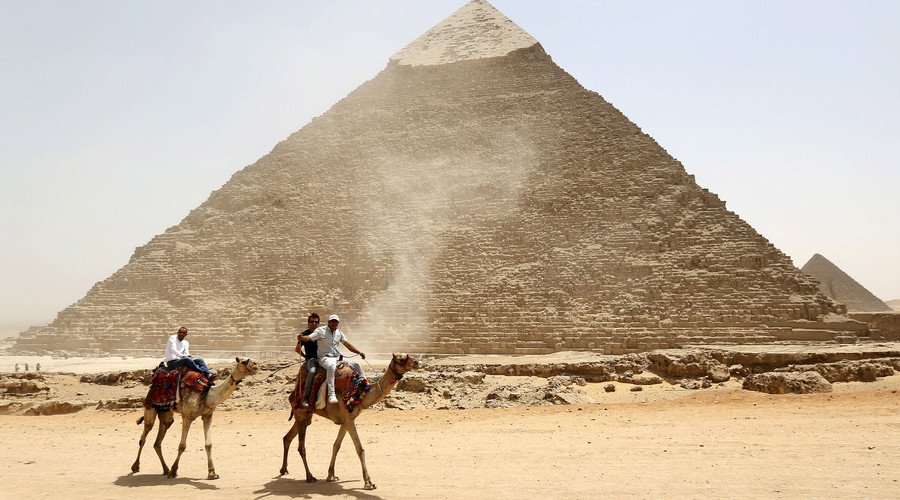“Primitive machines” were constructed inside Egypt’s pyramids to protect the royal tombs of Pharaohs from robbers and looters, according to digital reproductions created by archaeologists.
The reproductions of the early anti-burglary mechanism offer an insight into some of the mysteries surrounding ancient Egyptian tombs.
The digital model suggests that tomb raiders were kept out of the royal funerary chambers inside the Great Pyramid of Giza using a protective mechanism, which was shown on an episode of the Science Channel’s series “Unearthed.”
An archaeologist with the program said ancient Egyptians did not just rely on prayers for the protection of their kings, but also designed a detailed system to keep robbers out.
READ MORE: Literally, a pyramid scheme: Giza thieves caught selling ancient stones
Every year, thousands of tourists flock to Egypt to see the Great Pyramid of Giza, which was constructed around 4,500 years ago and finished in 2,560 BC under Pharaoh Khufu’s rule.
American archaeologist Dr Mark Lehner was able to work out how the defense system inside the pyramid worked and called it a “very primitive machine.”
In a small room inside the pyramid beside the king’s chambers, he explained how the tomb was protected from potential plunderers.
READ MORE: ‘Heat anomaly’ found in Great Pyramid of Giza, could be secret chamber
“Here, Khufu’s builders designed a line of defense against anyone who had entered the king’s chamber, had they got this far,” Lenher said during the program. “These grooves and protrusions are not decorative – they are part of a very primitive machine.”
Thick walls protected the king’s chamber, with some parts being up to 80 meters thick.

Passageways remained unprotected, so ancient Egyptians carved the grooves outside the entrance of the tomb and fitted large granite slabs into them to cut off the path of any potential looters who had managed to get so deep into the pyramid.
Archeologists have been aware of the system since the 19th century, according to the IBTimes, but a digital version of the system was unveiled for the first time in the documentary.
As a result of understanding the security system in more depth, the research could lead archaeologists to discover new chambers inside the ancient structures, IBTimes reported.
Some experts believe that the newly discovered chambers were simply “fake” and used to trick robbers into believing they the real thing.
Khufu’s remains are believed to be located somewhere in the pyramid and modern technology could be the key to uncovering more details about the pharaoh and his tomb.
The digital graphics were formed by cosmic rays used by the Scans Pyramid project in Egypt, which formed a 3D map of the pyramid’s inner design and structure to better understand the design of the ancient buildings.

